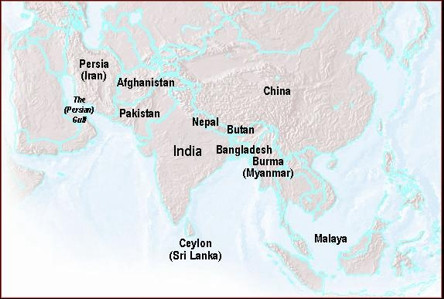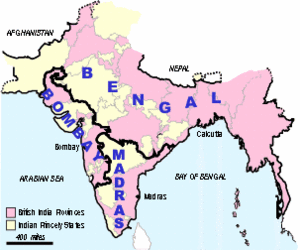Difference between revisions of "Beginners' Guide"
(→The very first steps) |
(→The very first steps: update date) |
||
| Line 35: | Line 35: | ||
*Search the archives of the India List. You may find that someone else has already researched the family tree you are interested in. Read how to do this, and more about the India List, in the Fibiwiki link [[Mailing lists]] | *Search the archives of the India List. You may find that someone else has already researched the family tree you are interested in. Read how to do this, and more about the India List, in the Fibiwiki link [[Mailing lists]] | ||
| − | *Search the main online data bases. There are three of these, FIBIS; the IGI index on Family Search - which is the website of the Mormon Latter Day Saints Church (LDS); and the British Library site, India Office Family History Search. The LDS site hosts a large volume of transcriptions based on the India Office [[Church records|church records]] at the British Library, so you may wish to investigate this website first. '''Information about births is available to 1910, marriages to 1935 and deaths to 1948'''. (Alternative records are available for later births and marriages, see the link [[IGI]]). The FIBIS database contains information from many sources, including (at April 2013) some births to ''' | + | *Search the main online data bases. There are three of these, FIBIS; the IGI index on Family Search - which is the website of the Mormon Latter Day Saints Church (LDS); and the British Library site, India Office Family History Search. The LDS site hosts a large volume of transcriptions based on the India Office [[Church records|church records]] at the British Library, so you may wish to investigate this website first. '''Information about births is available to 1910, marriages to 1935 and deaths to 1948'''. (Alternative records are available for later births and marriages, see the link [[IGI]]). The FIBIS database contains information from many sources, including (at April 2013) some births to '''1926'''. The records found on the British Library website contain most of the information found on the original record, but are only a small proportion of the total records. To access the links for these data bases, and for more information, read |
** [http://www.search.fibis.org/frontis/bin/index.php FIBIS database]. | ** [http://www.search.fibis.org/frontis/bin/index.php FIBIS database]. | ||
**[[IGI]] | **[[IGI]] | ||
Revision as of 22:59, 7 May 2013
| See Peter Bailey's slideshow "Your First Visit to the IOR". |
The FIBIwiki contains lots of guidance for starting out on your British India research. It is recommended that you read through this page before contacting FIBIS for personal research services (Members) or research advice (non-Members).
Contents
Scope of FIBIS' Interest
The main focus of FIBIS activities is the ‘sub-continent’ of India but the society is also interested in all areas and activities of the British in South Asia including the following between the founding of the East India Company in 1599 to ‘Indian Independence’ in 1947:
Afghanistan, Aden, Andaman Islands, Bangladesh, Bencoolen (Sumatra, Indonesia), Burma (Myanmar), Ceylon (Sri Lanka), China, Macao & Hong Kong, Indonesia (Borneo, Labuan etc.), Malaysia, Mauritius, Persia, Singapore, Straits Settlements.
Also included are the activities of the East India Company in London and St. Helena.
Presidencies
British India was divided into three Presidencies:
- Bombay, which covered the smallest area on the west of the country, extending through Sind and to the coastal area of what is now Pakistan, including Karachi and also included Aden
- Bengal, which covered the east of the country and included Burma and what is now Bangladesh and extended to the North West Frontier to include most of modern day Pakistan, including Lahore, Multan, Peshawar and Rawalpindi
- Madras, which covered the southern portion of India
The main cities of the Presidencies were Bombay, Calcutta and Madras, respectively.
Knowing which Presidency a town or city was in, is important when consulting many of the India Office Records held at the British Library.
Also note that administrative boundaries changed from time to time and it is important to check 'border' districts in the adjoining area. The above map is adapted from Plate 21 of the (1931) revised atlas of the Imperial Gazetteer of India. Such small scale maps cannot show every enclave of territory, and this map is not to be taken as an authority for boundaries. For more detail see the provincial maps in the Imperial Gazetteer atlas, and large scale published Survey of India topographical maps.
Recommended steps for your research
The very first steps
- Search the archives of the India List. You may find that someone else has already researched the family tree you are interested in. Read how to do this, and more about the India List, in the Fibiwiki link Mailing lists
- Search the main online data bases. There are three of these, FIBIS; the IGI index on Family Search - which is the website of the Mormon Latter Day Saints Church (LDS); and the British Library site, India Office Family History Search. The LDS site hosts a large volume of transcriptions based on the India Office church records at the British Library, so you may wish to investigate this website first. Information about births is available to 1910, marriages to 1935 and deaths to 1948. (Alternative records are available for later births and marriages, see the link IGI). The FIBIS database contains information from many sources, including (at April 2013) some births to 1926. The records found on the British Library website contain most of the information found on the original record, but are only a small proportion of the total records. To access the links for these data bases, and for more information, read
- The church records at the British Library are to be digitised and should be available online during 2013 through the commercial site findmypast.co.uk.
- When you have some identifying details of a person such as name, date and place(presidency), you might wish to join the India List (see above) and send an email to the list, asking whether anyone has any knowledge of the family.
- Consider joining your local genealogy society. Enquire about the facilities offered to members. Most large societies provide members free online access in their libraries to commercial sites such as FindMyPast and Ancestry. This will become especially relevant when the church records at the British Library are digitised and available through findmypast.co.uk. Some libraries may also offer free access to websites such as FindMyPast and Ancestry, see Miscellaneous tips.
The next steps
- Read the Fibiwiki article Birth, marriage and death records and all the associated articles and links
- By now, you may have some occupational details.
- For officers and soldiers in the Military, read Armies in India and all the associated articles and links which are relevant to your research.
- Look at Category:Occupations, and read the articles and links about occupations relevant to your research.
Further steps
- Look at Category:Research methods, and Category:Records and read the articles.
- Browse the remaining categories on the Main Page

